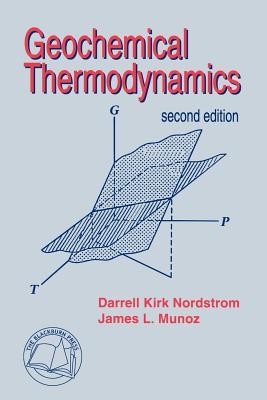
- We will send in 10–14 business days.
- Author: Darrell Kirk Nordstrom
- Publisher: Blackburn Press
- ISBN-10: 1932846093
- ISBN-13: 9781932846096
- Format: 15.2 x 22.9 x 2.8 cm, minkšti viršeliai
- Language: English
- SAVE -10% with code: EXTRA
Reviews
Description
Geochemical Thermodynamics (Second Edition), first published in 1994, takes the reader beyond the fundamental principles of thermodynamics to true geochemical applications. You will find the most complete coverage of the phase rule, chemography, solid solutions, ionic activities in the mixed aqueous electrolytes, and chemical potential diagrams for multiphase systems, plus other concepts central to geochemical theory. New sections include thermobarometry applications for igneous and metamorphic rocks; expanding information on electrolytes at high temperature and pressure; a new chapter on geochemical modeling; and substantially updated and expanded references. A singularly attractive feature is a new appendix containing internally consistent enthalpies, entropies, heat capacities, and free energies, and equilibrium constants for a limited number of elements, ions, non-silicate minerals, and reactions at 298.15K and 1 atmosphere that are particularly useful for hydrogeochemical modeling. Throughout, there is an emphasis on environmentally relevant examples and applications.
EXTRA 10 % discount with code: EXTRA
The promotion ends in 23d.07:44:21
The discount code is valid when purchasing from 10 €. Discounts do not stack.
- Author: Darrell Kirk Nordstrom
- Publisher: Blackburn Press
- ISBN-10: 1932846093
- ISBN-13: 9781932846096
- Format: 15.2 x 22.9 x 2.8 cm, minkšti viršeliai
- Language: English English
Geochemical Thermodynamics (Second Edition), first published in 1994, takes the reader beyond the fundamental principles of thermodynamics to true geochemical applications. You will find the most complete coverage of the phase rule, chemography, solid solutions, ionic activities in the mixed aqueous electrolytes, and chemical potential diagrams for multiphase systems, plus other concepts central to geochemical theory. New sections include thermobarometry applications for igneous and metamorphic rocks; expanding information on electrolytes at high temperature and pressure; a new chapter on geochemical modeling; and substantially updated and expanded references. A singularly attractive feature is a new appendix containing internally consistent enthalpies, entropies, heat capacities, and free energies, and equilibrium constants for a limited number of elements, ions, non-silicate minerals, and reactions at 298.15K and 1 atmosphere that are particularly useful for hydrogeochemical modeling. Throughout, there is an emphasis on environmentally relevant examples and applications.


Reviews